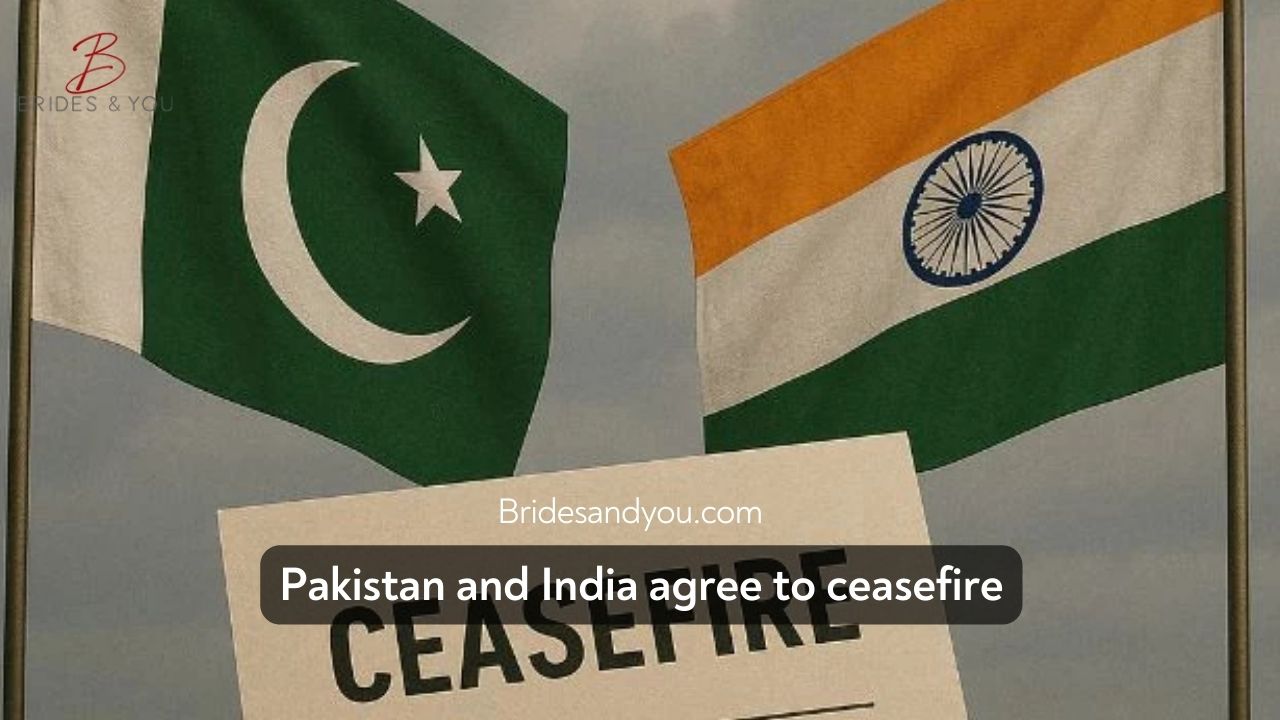Now Reading: India Pakistan Ceasefire Agreement Confirmed After Intense Escalation
-
01
India Pakistan Ceasefire Agreement Confirmed After Intense Escalation
India Pakistan Ceasefire Agreement Confirmed After Intense Escalation

In a significant diplomatic breakthrough, India and Pakistan have agreed to a full and immediate ceasefire, halting days of escalating military tensions that had alarmed the international community. This historic India Pakistan ceasefire agreement was first announced by US President Donald Trump and later confirmed by top leaders from both countries, including Pakistan’s Deputy Prime Minister Ishaq Dar and India’s External Affairs Minister Dr. S. Jaishankar.
The announcement followed multiple cross-border incidents, including drone attacks, missile strikes, and heavy shelling — all contributing to the worst military flare-up between the two nuclear-armed nations in recent years.
How the Ceasefire Unfolded: A Diplomatic Push by the U.S.
The ceasefire came after intense diplomatic mediation led by the United States. President Trump took to his social media platform to declare:
“After a long night of talks mediated by the United States, I am pleased to announce that India and Pakistan have agreed to a FULL AND IMMEDIATE CEASEFIRE. Congratulations to both countries on using common sense and great intelligence.”
This statement was swiftly followed by confirmation from Pakistan’s Ishaq Dar and India’s S. Jaishankar via their respective social media accounts.
Deputy Prime Minister Dar reaffirmed Pakistan’s commitment to peace, stating that while the country seeks regional stability, it will not compromise on its sovereignty and territorial integrity.
“Pakistan has always strived for peace and security in the region, without compromising on its sovereignty and territorial integrity,” tweeted Dar.
India’s Statement: Firm on Peace and Terrorism
India’s External Affairs Minister, Dr. S. Jaishankar, echoed similar sentiments, emphasizing India’s long-standing commitment to peace while also maintaining a zero-tolerance policy against terrorism.
“India and Pakistan have today worked out an understanding on stoppage of firing and military action… India has consistently maintained a firm and uncompromising stance against terrorism in all its forms and manifestations.”
Later, Indian Foreign Secretary Vikram Misri confirmed that all military operations on land, air, and sea have been suspended immediately, citing sustained diplomatic engagement as the reason behind the breakthrough.
U.S. Leadership in Mediation
US Secretary of State Marco Rubio and Vice President JD Vance reportedly played pivotal roles in behind-the-scenes negotiations. Over the last 48 hours, they engaged with top leadership from both countries, including Prime Ministers Narendra Modi and Shehbaz Sharif, Pakistan’s Army Chief General Asim Munir, and India’s National Security Advisor Ajit Doval.
Rubio posted:
“India and Pakistan have agreed to an immediate ceasefire and will begin formal talks at a neutral venue. This follows intensive diplomatic efforts to avoid further escalation.”
Escalation Timeline: What Led to the Agreement?
The conflict had intensified following the April 22 attack in Pahalgam, located in Indian Illegally Occupied Jammu and Kashmir (IIOJK), which resulted in 26 deaths. India blamed Pakistan-based groups without evidence, a claim Pakistan firmly denied.
India responded by closing the Wagah border, revoking Pakistani visas, and suspending the Indus Waters Treaty, actions Islamabad viewed as provocations. In retaliation, Pakistan launched Operation Bunyan-un-Marsoos, targeting Indian military installations.
Key Escalation Events:
- Explosions in Muzaffarabad and Bahawalpur
- Pakistan claimed downing five Indian fighter jets, including four Rafales
- Pakistan intercepted 77 Israeli-made Harop drones
- Launch of the Al-Fatah missile in response to civilian casualties
- India admitted damage at five airbases
What Comes Next: Formal Talks and Global Oversight
According to US officials, formal peace talks will commence soon at a neutral venue under international observation. These discussions aim to resolve deeper issues and establish mechanisms to prevent future escalations.
The India Pakistan ceasefire agreement marks a rare but promising moment of cooperation between two historically tense neighbours. While both sides maintain firm national stances, the global community has welcomed the move as a critical step toward peace and stability in South Asia.
Final Thoughts
This ceasefire offers a vital opportunity for both countries to shift the narrative from conflict to cooperation. The world watches closely, hoping this agreement is not just a temporary truce, but the first step toward enduring peace in the region.











